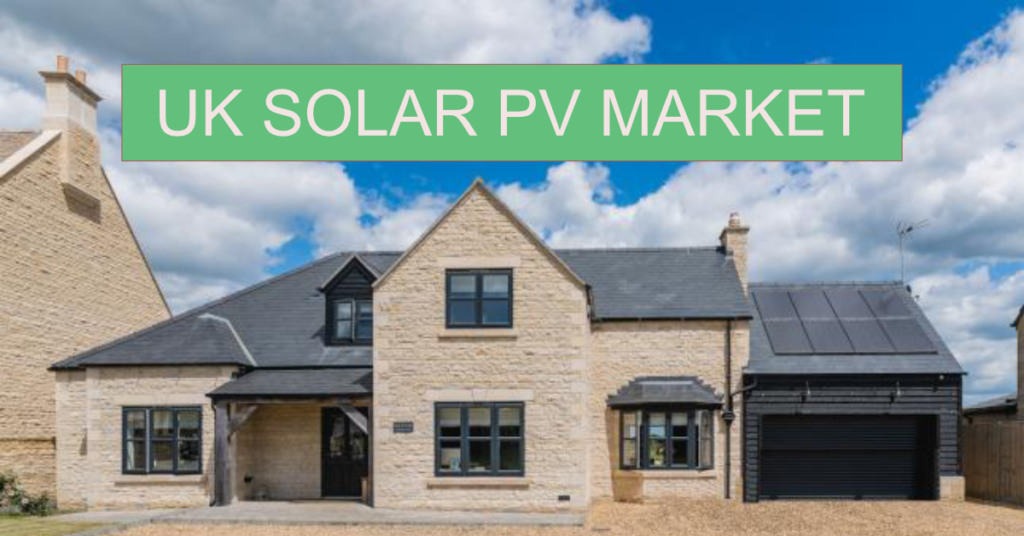The UK’s renewable energy market is developing much due to the growing popularity of Solar PV Modules. Significant amounts of investors are getting interested in this sector as it promises to be the energy source the future will be most dependent on.
UK Solar Power- The Future
Smart Export Guarantee (SEG) Scheme
The scheme called Smart Export Guarantee or SEG will be launched in January next year. As per this scheme, energy suppliers, who have at least 150,000 domestic customers, will be required to buy the surplus renewable energy generated by its customers.
The companies will be eligible to set their own tariffs for this energy. Homeowners will only be paid for the energy they export back to the supplier. Currently, as per the FiT scheme, consumers who install small scale systems are considered to export 50% of the electricity that they produce. Consumers are paid for the entire 50% even when the export is less than 50% or when the excess power generated is not needed by the grid.
The existing ‘Feed-in-Tariff’ (FiT) scheme will be superseded by the ‘Smart Export Guarantee’ (SEG) proposed by the Govt. Electricity suppliers will now pay small scale energy producers for excess energy produced from their installations, that are being put back into the grid.
The SEG scheme will create a new marketplace; wherein, suppliers will be encouraged to bid for the excess electricity produced. This will give exporters a competitive market price and the solar panel installed property owners, will have a more excellent choice and control over the buying and selling of electricity. SEG will lead to consumers, who install new clean energy, being paid for the energy they generate, thereby protecting consumers from higher cost burdens.
It has been observed that LG and Panasonic produce high-quality solar modules; they provide a 25-year warranty & high-efficiency solar modules at affordable prices.
The UK Govt has a set a target of 15% for energy consumption coming from renewable sources by 2020 and Solar PV capacity is touted to be the largest contributor.
UK Solar PV Timelines
- 2006- The UK had installed about 12 MW of PV capacity which represented only 0.3% of the total European Solar PV of 3,400 MW.
- 2010- Usage of Solar Power increased as a result of cost reduction in PV panels. Feed-in-Tariff (FiT) subsidy was introduced in April 2010, which resulted in the rapid growth of the UK PV market.
- 2011- The FiT allowance was cut in 2011, which resulted in the decline of the solar PV market. Due to the lack of interest from investors in solar panels, especially for projects that were higher than 250 kW. By the end of 2011, there were 230,000 solar power projects in the UK, with a total installed generating capacity of 750MW.
- 2012- The Govt. set a target of 22 GW of installed solar power capacity by 2020, by announcing that 4 million homes across the country would have energy generated via solar PV modules.
- 2013- Ikea announced the sale of solar panel packages for houses in 17 of its stores in the UK by 2014.
- 2014- More than 5 MW power was being generated from 18 schemes in Wales.
- 2015- Based on a global report, The UK was considered to be the fourth largest country in solar energy capacity. The UK contributed by adding 3.7 GW of solar PV capacity in 2015 to reach 9.1 GW power capacities by the end of 2015.
- 2016- The total capacity was over 10,000 MW. From April to September 2016, UK solar panels produced more electricity than coal power.
- 2017- Installed Solar PV represented a 3.4% share of total electricity produced in the UK with a controlled capacity of 12.8 GW. • 2018- In 2018, the overall solar capacity in the UK stood at 12,885.9 MW across 959,671 installations, which was an increase of 1.6% from the previous year.
- 2019- Presently, in the UK 45% of the total installed solar PV capacity comes from large scale installations which are greater than 5 MW and 20% coming from small scale installations of 0-4 KW.


